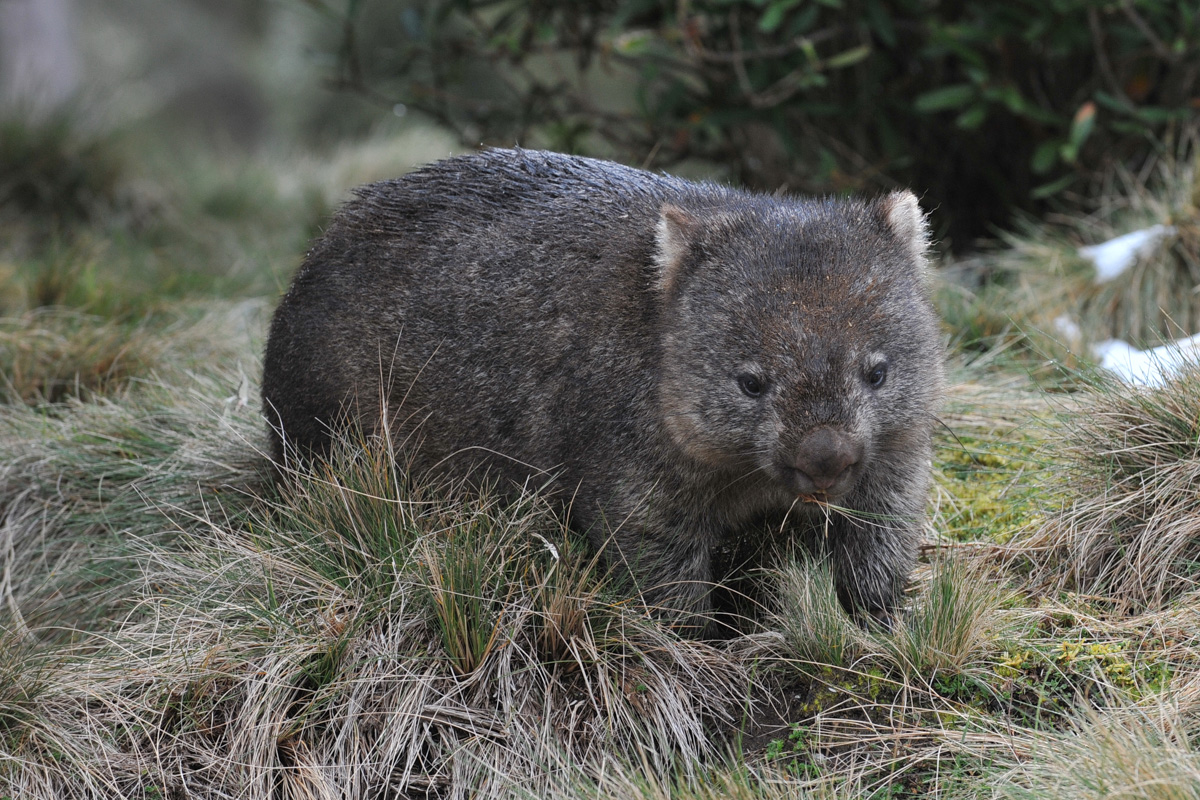The ever-endearing Common Wombat
[vc_row][vc_column width="1/1"][vc_custom_heading text="The ever-endearing Common Wombat" font_container="tag:h2|font_size:40|text_align:left" google_fonts="font_family:Abril%20Fatface%3Aregular|font_style:400%20regular%3A400%3Anormal"][vc_column_text]
APRIL 2015 | SARAH LLOYD
[/vc_column_text][/vc_column][/vc_row][vc_row][vc_column width="1/1"][vc_separator color="black" align="align_center" style="dotted" border_width="2"][/vc_column][/vc_row][vc_row][vc_column width="1/1"][vc_column_text]
[udesign_icon_font name="fa fa-camera" color="#000000"] Jan Collett
OVER THE millennia Australia’s extensive grasslands have been exploited by diverse groups of large herbivorous animals including wombats and kangaroos.
These animals have very different ways of dealing with a bulky diet of plant material, mostly grass. In wombats, the fermentation occurs in a large colon at the back end of the gut; in kangaroos, the same process takes place in a large fore stomach.
The Common Wombat is found throughout the Meander Valley. It is a solitary mostly nocturnal animal that, is occasionally seen during the day when it ventures from its underground burrow dug into sloping ground.
The Common Wombat is the largest grass eating mammal that digs burrows. Their impressive burrows can be up to 18 meters long.
Other large burrow-diggers are either carnivorous (e.g. badgers) or they feed on concentrated food. For example, armadillos and aardvarks live on colonial insects; and porcupines live on roots, tubers and fallen fruit. Making underground burrows is believed to be a relatively recent adaptation to Australia’s drying climate and it may have saved wombats from going the way of other large, hind gut fermenters such as the extinct diprotodonts.
Wombats favour tough perennial grasses, sedges and rushes that grow in their home range of approximately 20 hectares. Their split upper lip allows them to crop vegetation very close to the ground. “Wombats favour tough perennial grasses”
They have extremely sharp teeth that continue to grow throughout their lives. Wombats have only one young every two years. The young leaves the pouch after six to nine months and follows its mother until weaned at about twenty months old.


